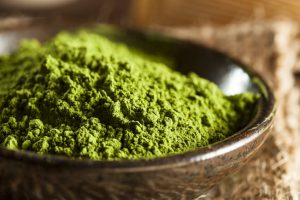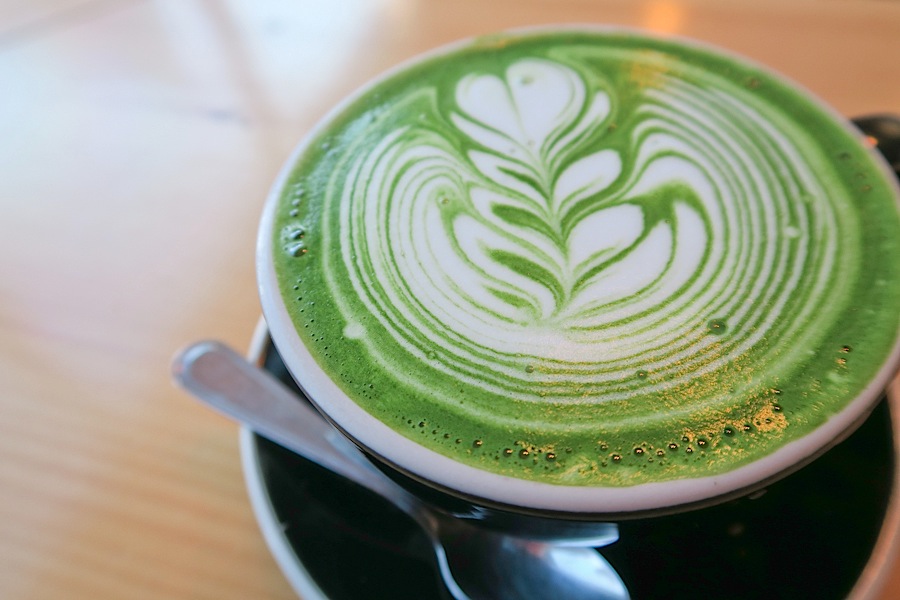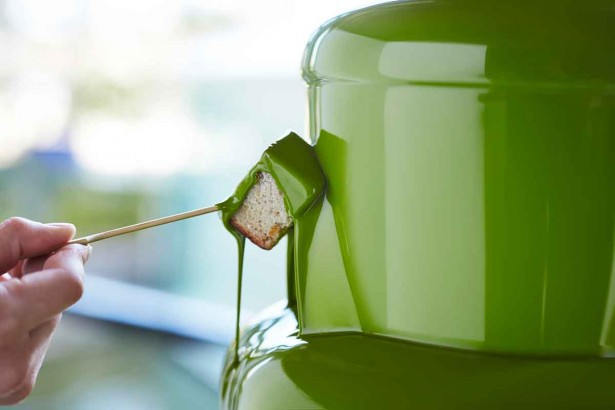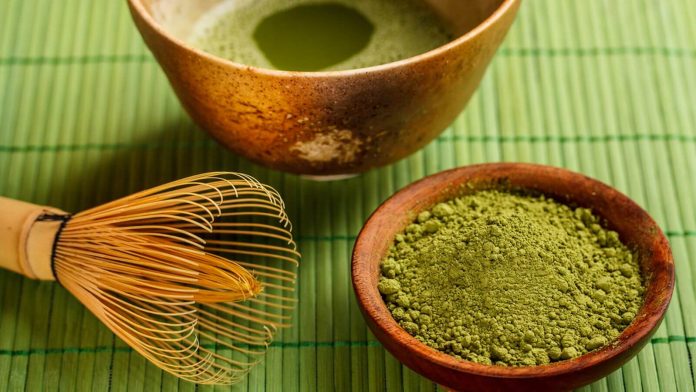Millennials just love to get their hipster on! If there is something new brewing out there, they want a taste of it. Whether it’s bacon-flavored seaweed or non-GMO produce, it’s on the shelves at an organic supermarket near you. Another great super food that has hit the top of the trend charts in none other than the new green on the block – matcha. No one in the West really heard about it, until celebrities started raving about the ample benefits from drinking this heavenly brew. Think 10x the benefits of tea.

What is matcha exactly?
For the uninitiated, matcha is basically powdered green tea. Usually tea is made by steeping its leaves in boiling water and then drinking the concoction after straining. But with matcha, you mix the powdered goodness in water that is just below boiling and then ‘whip’ it with a bamboo spoon till it’s frothing.
How is matcha harvested?
Matcha’s cousin, regular tealeaves, are cultivated out in the open. But matcha needs a little more tender loving care. The plants are covered, as this helps to retain the nutrients and flavor in the leaves. Then, the best ones are handpicked, steamed, dried and aged to prevent fermentation. After spending some time in cold storage, the leaves are then powdered, packaged and ready for your cup!
Health benefits from matcha
So, when you brew tea, you usually throw out the leaves. But when preparing matcha, you consume the leaves as well, as part of the drink. This means that you get benefits that match no other regular cup of tea. Matcha leaves are packed with polyphenols – antioxidants that help prevent diseases such as cancer and heart problems. It also helps regulate blood flow in the body and the property EGCG in matcha boosts metabolism.

Matcha contains caffeine
Good news for all those who end up dozing during a long workday – matcha contains three times the amount of caffeine compared to a regular cup of tea, but equal to the amount of caffeine in a cup of coffee. So, you can easily switch to matcha instead of coffee, and still get the boost you need, along with a host of vitamins and minerals. Matcha also contains a properly called 1-theanine which causes relaxation, without the added drowsiness.
Warnings about matcha
Though matcha has many great properties, you need to be cautious mostly about what product you are buying. Supermarkets are being flooded with the super food, particularly because the demand has risen considerably by those looking for a healthier lifestyle. When purchasing matcha from a store, be sure to read the ingredients. There are a lot of ‘matcha mixes’ that contain matcha, but also other additives like sugar and milk, to help ease the strong grassy taste of the green drink.
Also, like all teas, matcha contains lead. This is because the leaves absorb it from the environment during cultivation, which is something that really cannot be helped. But, tealeaves are thrown away, while matcha is consumed whole, which mean that you’re probably consuming 30% more lead! A good tip would be to avoid matcha that is produced in China, where pollution levels are high. Also, if you’re paying more for matcha, it’s a good thing, because quality does come at a price.
Matcha in food
If you want to enjoy the superfood in a fun way, then why not make a matcha dessert? These days, chefs are going crazy over matcha desserts – from matcha milkshakes, to matcha cakes and muffins and everything in between! There are also a lot of YouTube channels – Cupcake Jemma and SORTED Food that have shared matcha-centric recipes.


